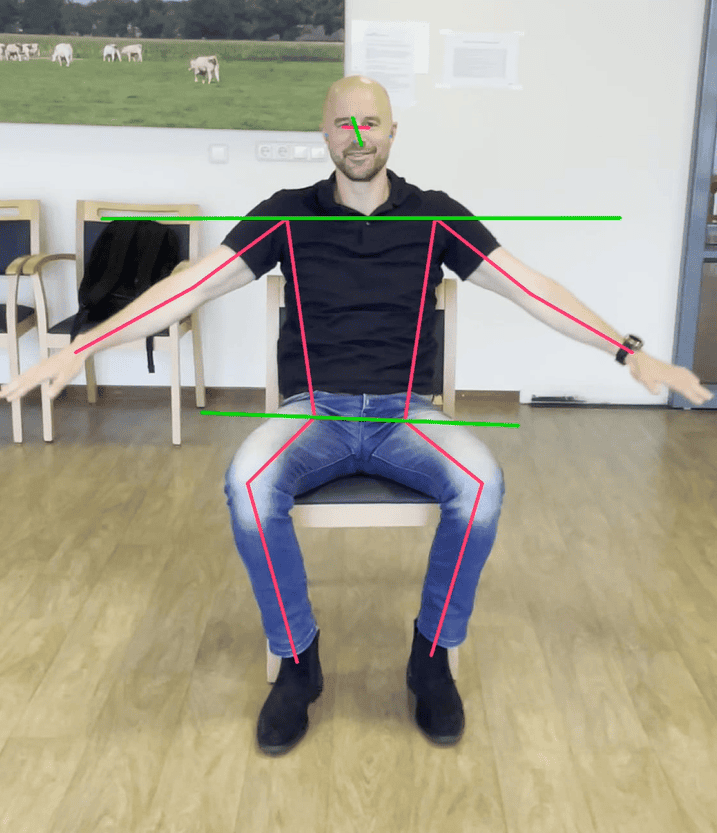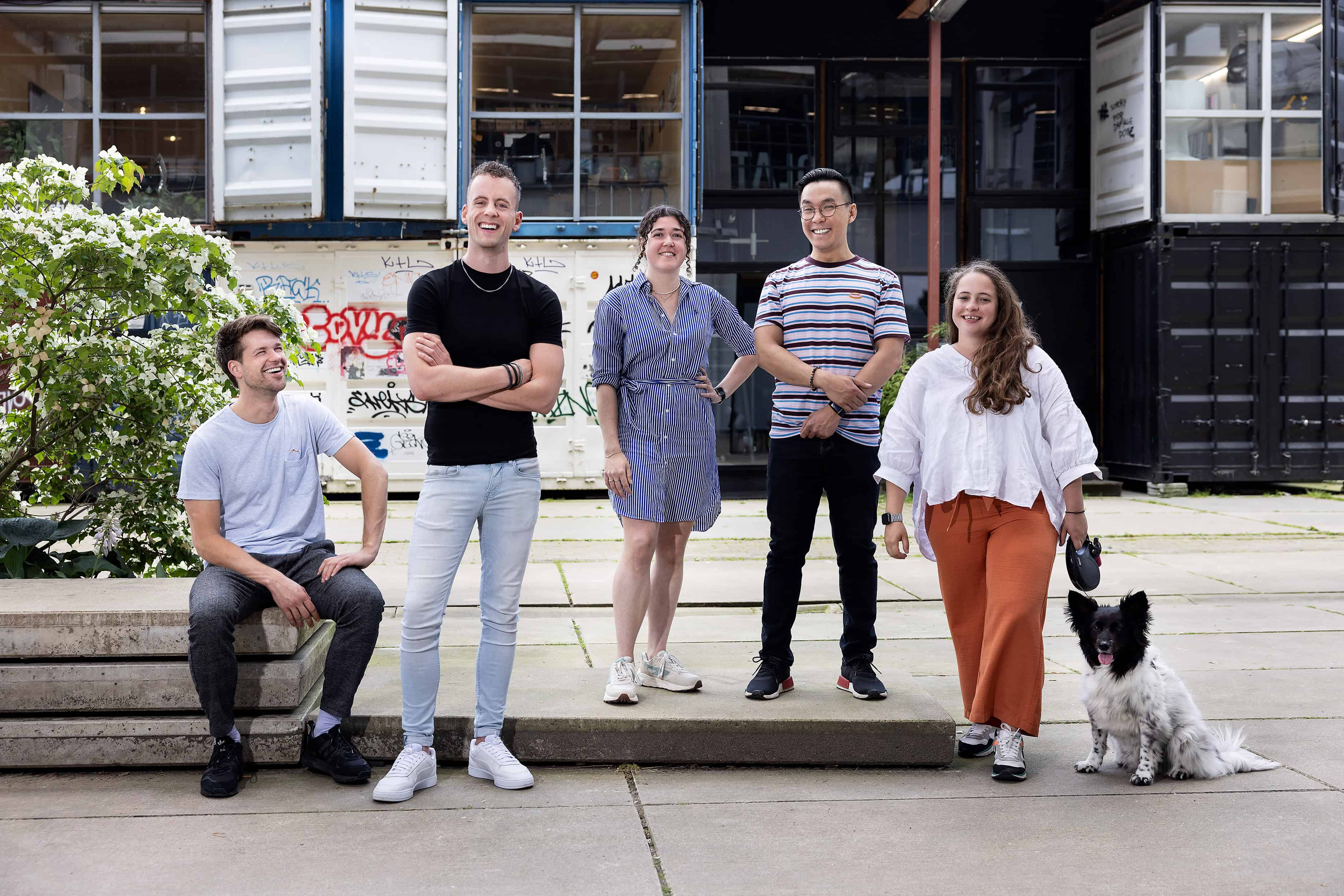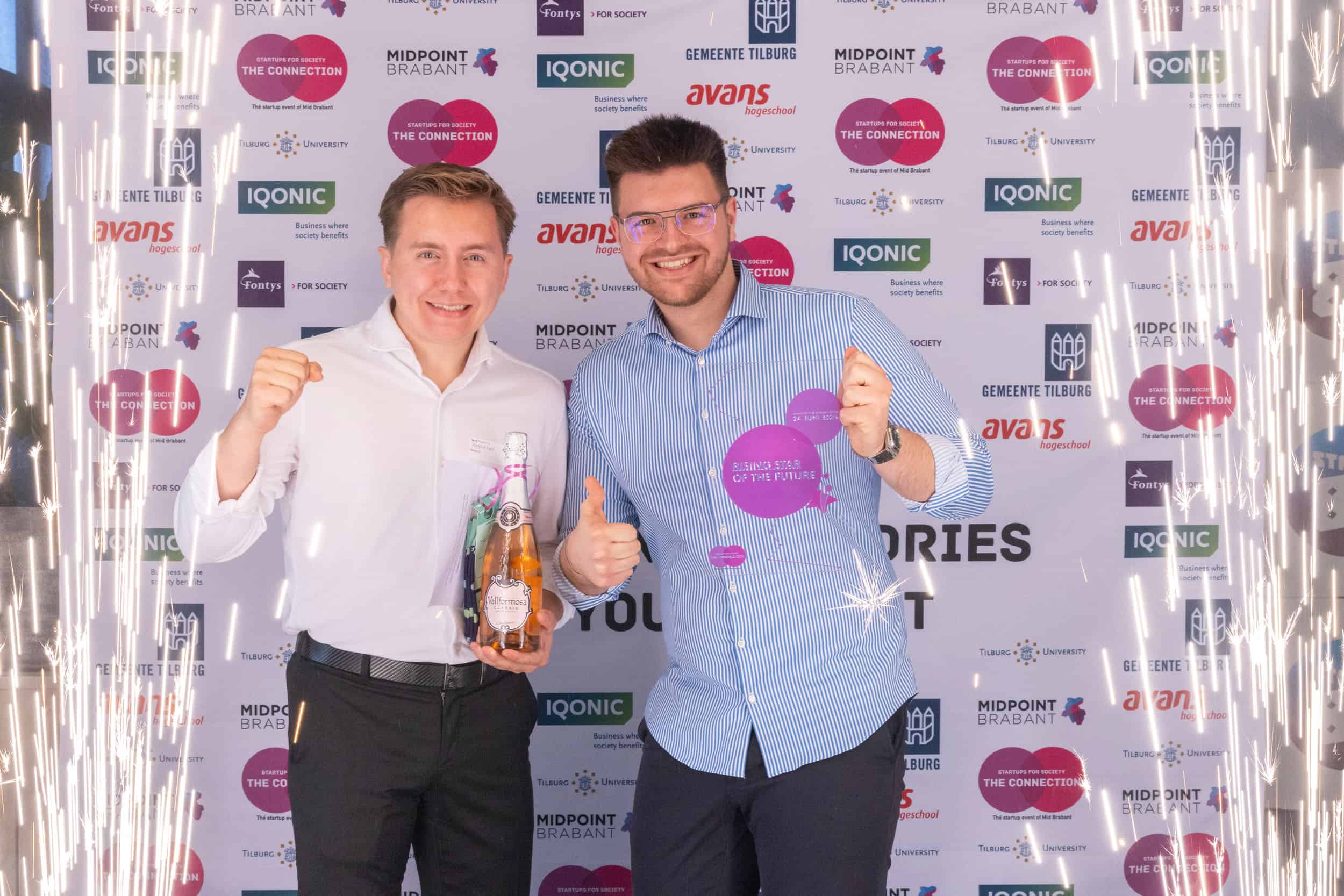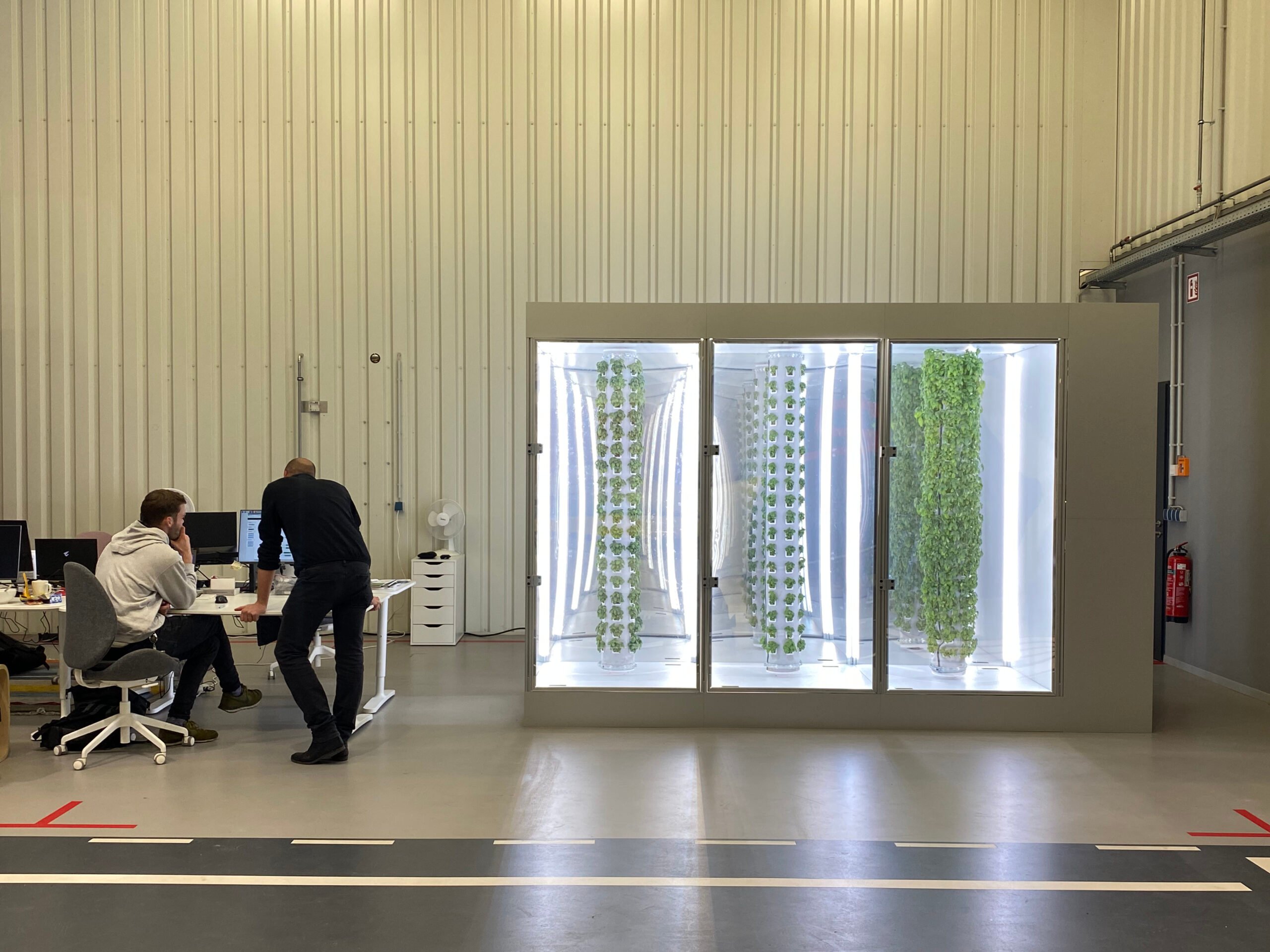
About Lite+Fog
- Founders: Martin Peter
- Founded in: 2019
- Employees: 8
- Money raised: 2 million euros
- Ultimate goal: Introduce a new concept of farming that brings economy and movement to vertical farming.
How do you grow food in – or next to – a city without using soil? It’s exactly that question that Berlin-based start-up Lite+Fog is trying to answer. The company uses fog to grow plants more efficiently. In this episode of start-up of the day, Martin Peter, co-founder of this company, speaks about the big ambitions he has with Lite+Fog. “I’m watching the plants grow as we do this interview”, Peter says enthusiastically.
What does Lite+Fog do?
“We combine multiple innovations and proprietary solutions to a farming concept that adds economy and movement to vertical farming. With Lite+Fog, we want to provide vertical farmers with more added value, cheaper farming systems and increased crop yields compared to traditional hydroponics.”
“Our first product, the Model M, is practically a botanical laboratory for fogponics. The main advantage of fogponics is that it doesn’t require any nozzles, piping, or soil to feed the plants. Fogponics uses suspended water that is enriched with nutrients to deliver nutrients and oxygen to plant roots by dispersing it via ultrasound in the form of tiny floating droplets. This is ideal for the plants and gives them an extra boost of oxygen. Model M is 3 meters high, 2 meters wide and 1 meter deep and has space for 450 plants or more on rotating planters. It also provides a completely controlled environment where you can grow any plant you want, even very rare ones. It is fully automated and AI-driven, so it can learn and provide optimal growing conditions, and with sensors and cameras on board, researchers can gain remote insight into how the plants are growing.”
There are more vertical farms. What makes Lite+Fog so unique?
“Our mist is created by ultrasonic waves. Our trade secret is how we can do that on a large scale. Then rotation is used, which is important to bring our growing columns closer together and save a lot of energy. They’re comprised of bendable textiles and have a hollow interior, making them very easy to handle. This way we can utilize four times more space than other vertical farms, which is complemented by lower energy consumption and lower material costs. Think about replacing all that steel – which sometimes accounts for eighty percent of the cost of setting up these farms – with textiles instead.”


Which problem does Lite+Frog solve?
“Vertical farming systems have always been too expensive. We are working on the technology and want to make it affordable. So food can be grown everywhere around the world. With our technique, farmers need 95 percent less water, no pesticides and fewer fertilizers – and plants can grow all year round. This should lead to cheaper and healthier food.”
“When you think about that one of our farms creates 75 times more surface to grow than an ordinary field, and that it can harvest all around the year, then we can create 400 times the amount of food in the same place – without harming the environment. This is huge.”
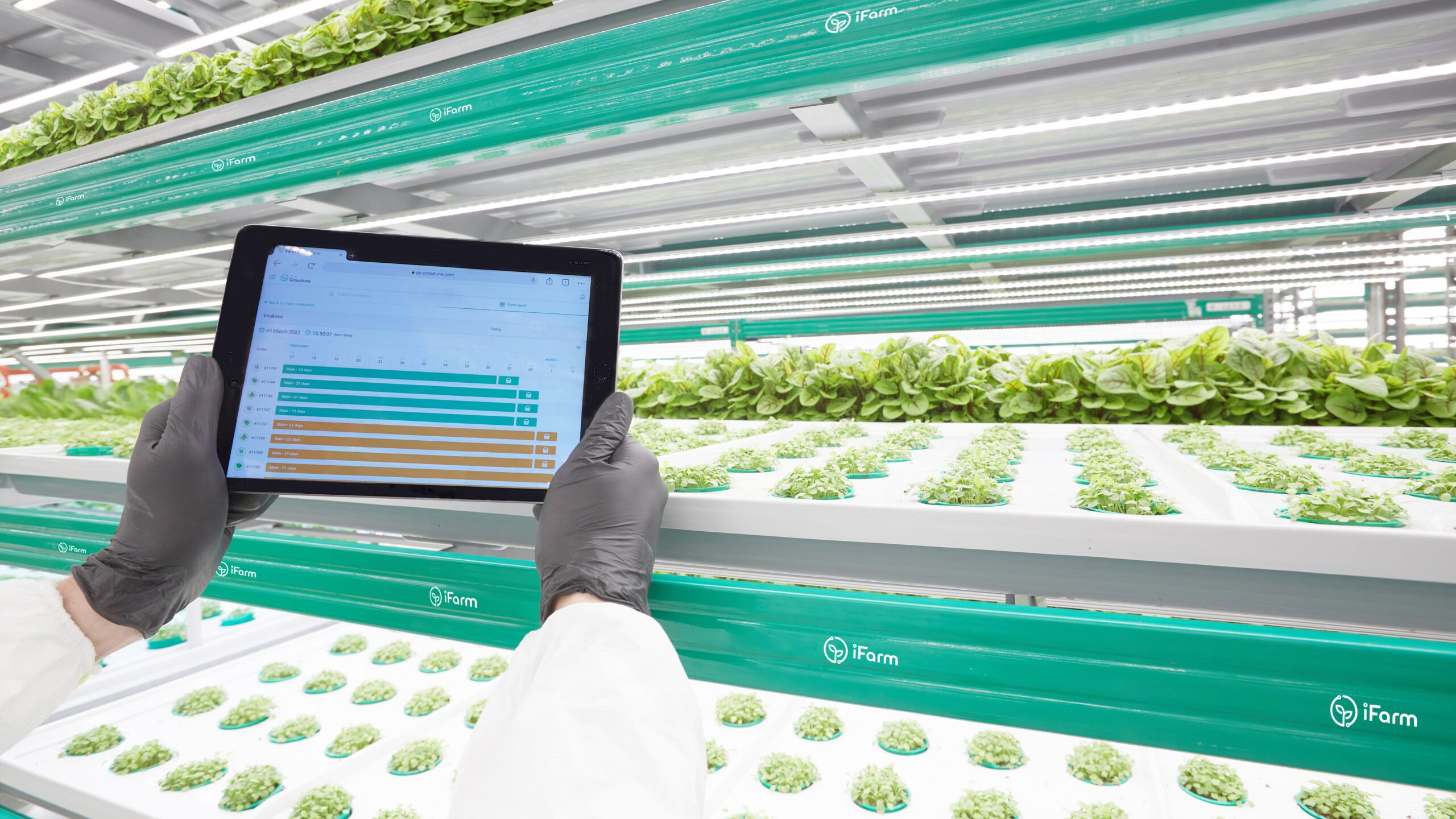
Do you also focus on other industries?
“Yes, we’e also focused on the pharmaceutical industry. Biontech wants to make vaccines for specific patients, for example, and this is a very targeted and small-scale production that can only be done with plants. Or take, for instance, scientists we spoke to last year. They needed a very special plant species that only grow in Australia for their cancer treatment research. It cost a lot of time and money for the plants to arrive in Europe and when they did, they had rotted. With our technology, we can solve that problem and just grow the plant here in Europe. Ultimately, there are a lot of industries that work with plants, even companies that cultivate meat. They need some of these growth factors, that plants, for one thing, can provide.”
Where do you want to be five years from now?
“We are still working on our prototypes. By early 2023, we want to finish a model that is six by six meters in size and big enough for an urban farm. In five years, we want to build a farm spanning one thousand square meters. In the long term, we want to move into doing mass production. In the future, eating food that comes from vertical farming will become the standard.”



